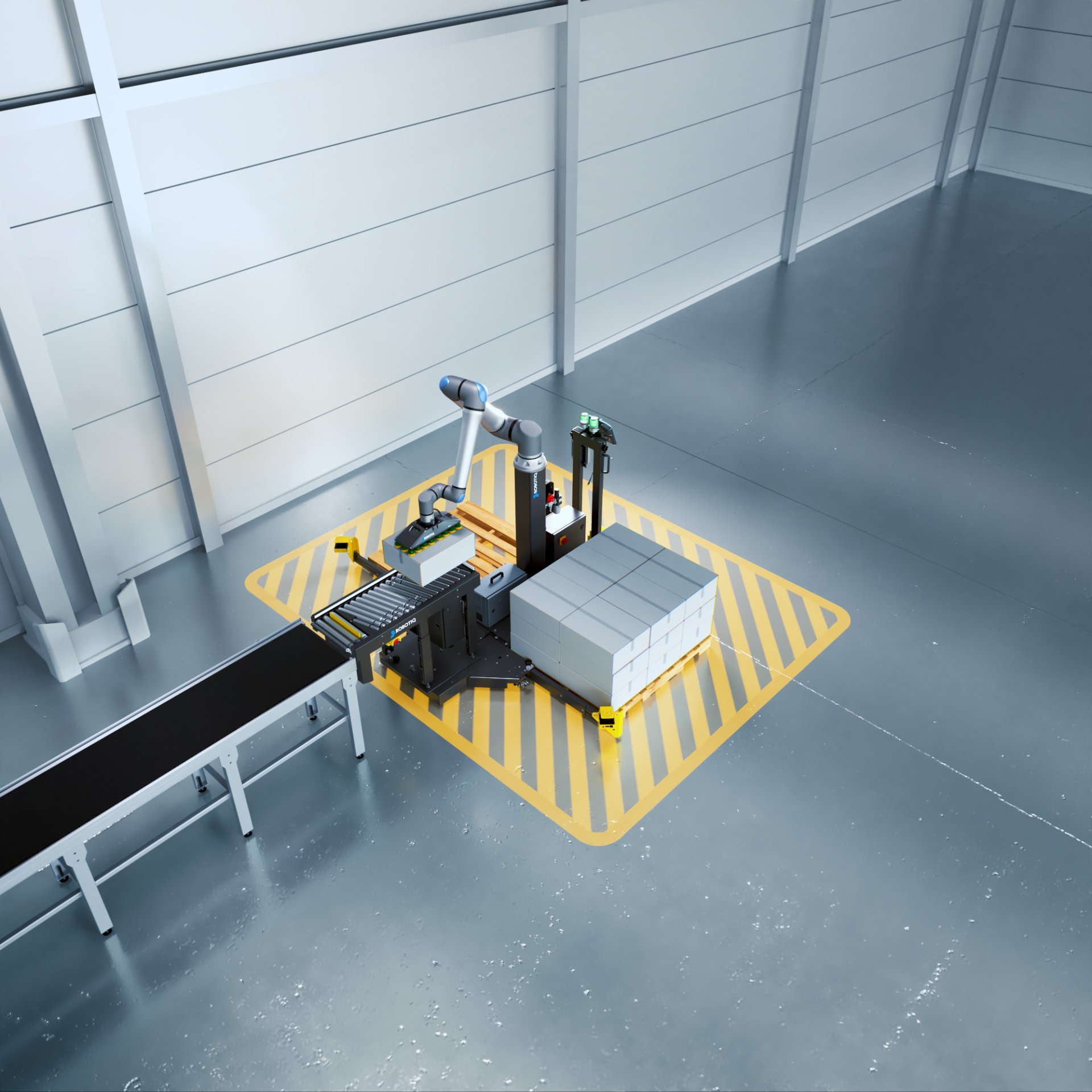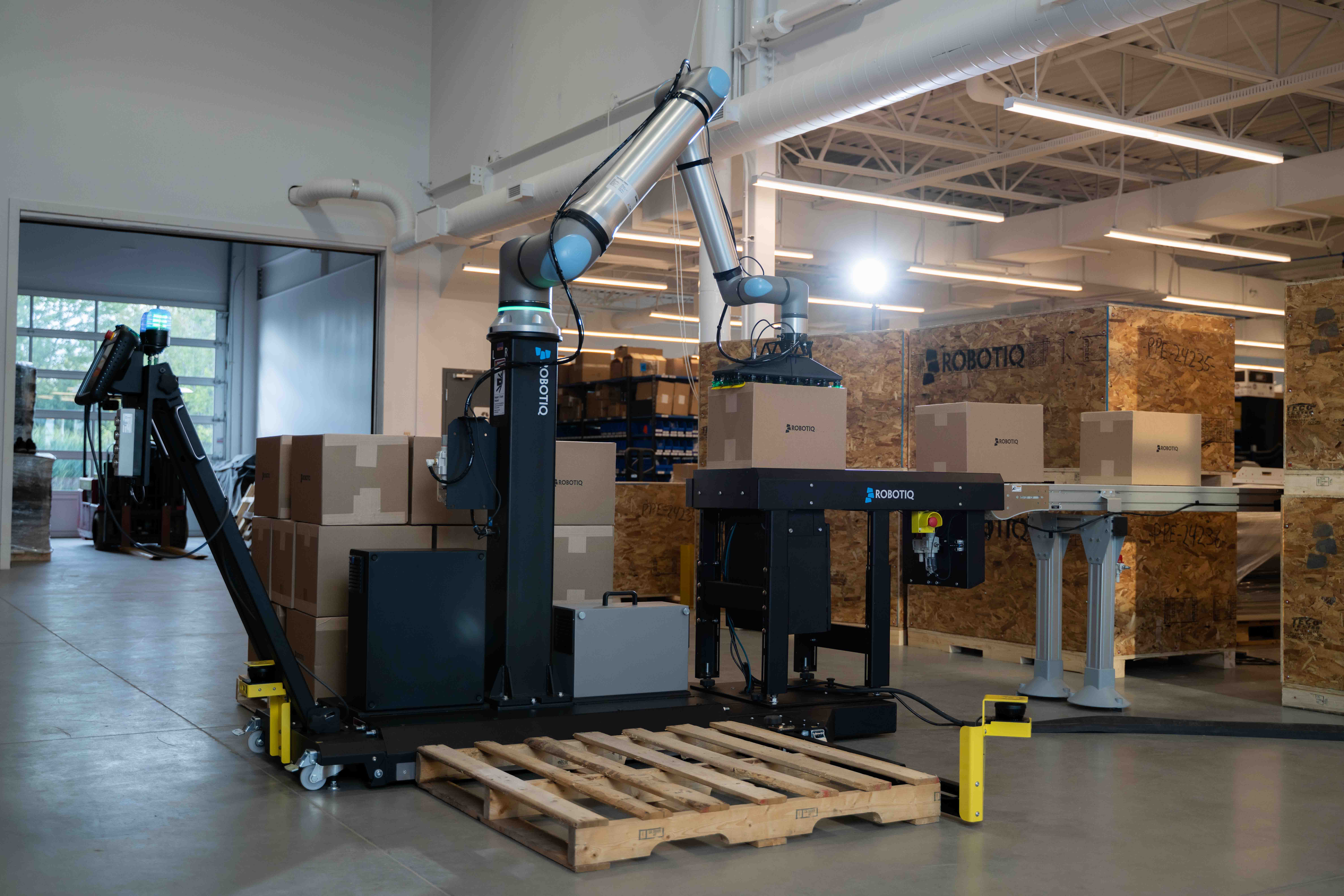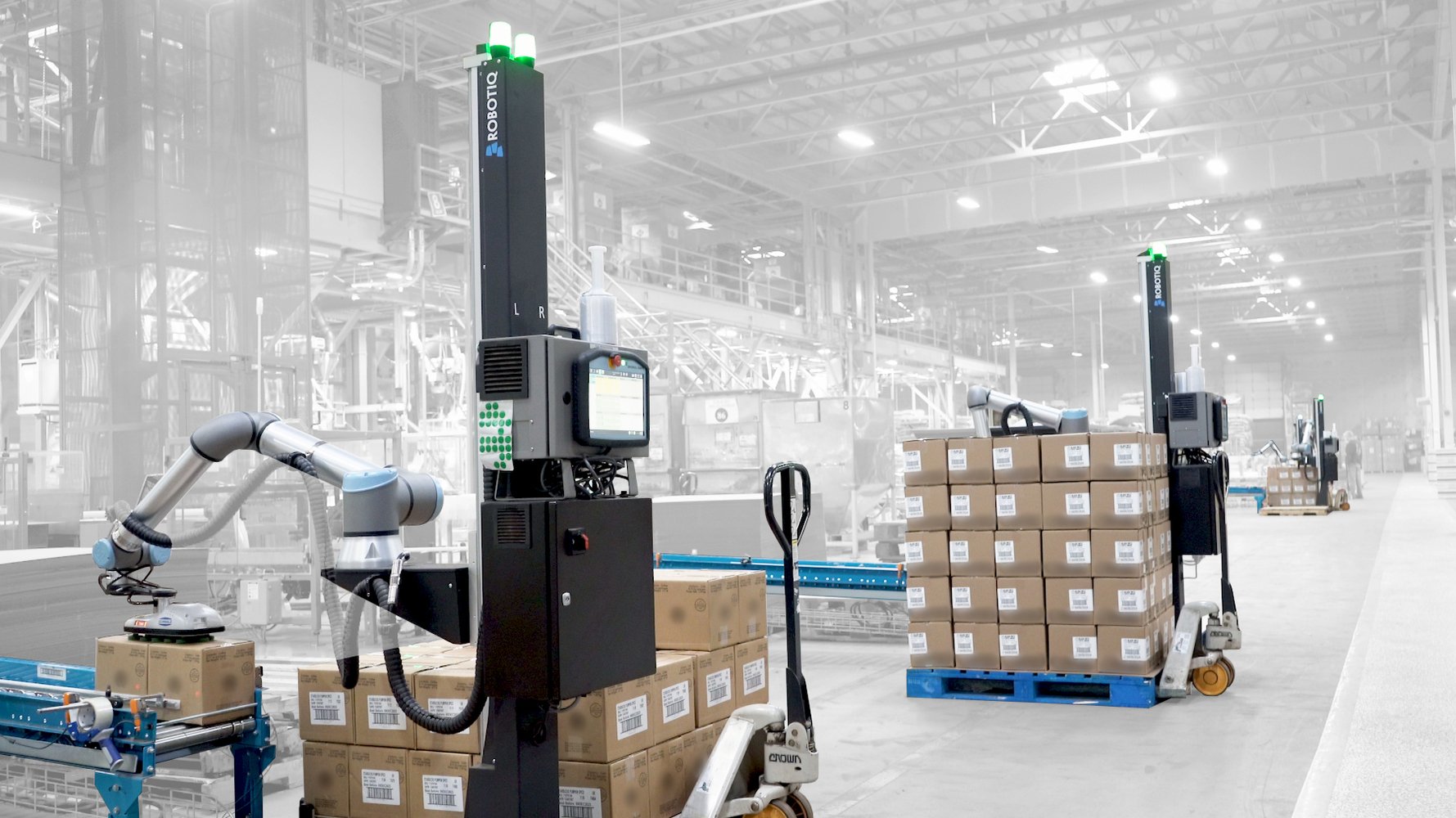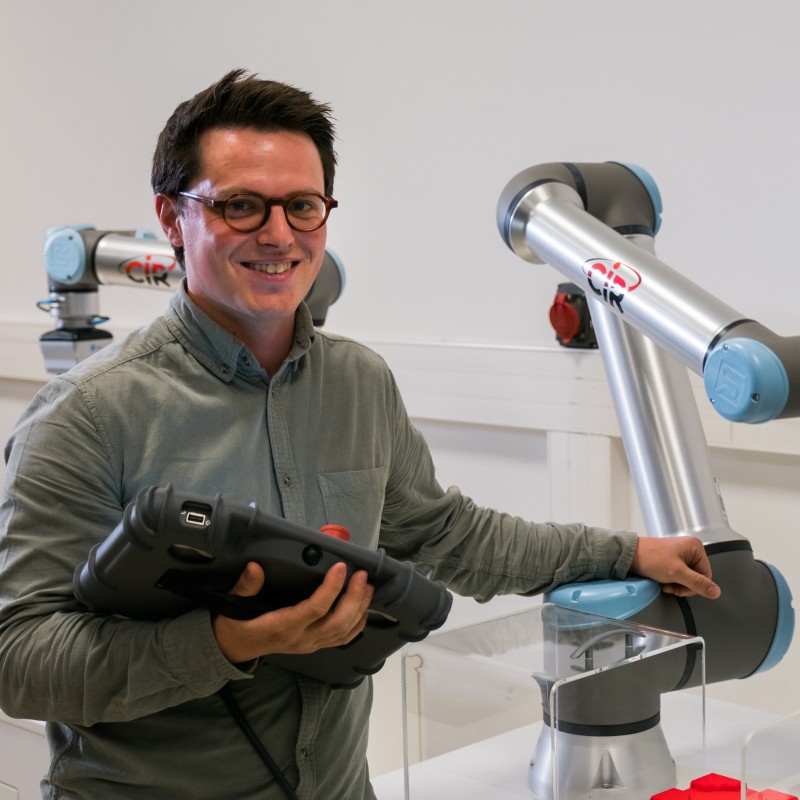5 Robotic Integration Questions to Answer Before Adopting Cobots

Posted on Mar 12, 2018 in Collaborative Robots
5 min read time
When you think of robots — or bots, for short — the first thing that comes to mind may be the kind of automation system used in manufacturing plants. These involve robotic arms or limbs that carry out simple, yet unsupervised, actions, such as placing an item on a conveyor belt or assembling components.
If you try to picture advanced robots instead, you might imagine an android or robot from a futuristic setting that can do various tasks. Think of popular digital assistants like Siri or Alexa, except with a full physical body at their command.
While both of these scenarios are possible — and in use — in today’s market, they’re not the only type of bot a business might deploy. Another form of robotic system is the “cobot,” which is short for collaborative robot. These can be used for automated tasks, but the idea is that they work alongside humans.
Cobots are arguably even more innovative and high-tech than your average robot. They will play a huge role in years to come, thanks to the industrial- and consumer-driven market for the Internet of Things. They're so promising, in fact, that many of this blog's readers are probably considering deploying them in one way or another.
Before doing so, however, there are some questions you should ask yourself.
1. Do I know the difference between cobots and industrial robots?
Your average industrial robot is usually in place to improve efficiency and processes. Most of the time, they can be used to fully automate a system or element of manufacturing, shipping, or some other process.
Cobots work directly in cooperation with humans. The goal of implementing cobots is not to render human workers obsolete, but rather to help humans with daily tasks. For example, some cobots are being put to work in hospitals, where they help surgeons conduct operations.
It's important to know the difference between an industrial robot and a cobot. Each type of robot is a tool, and tools are only effective with proper use. For instance, if a cobot will only slow down your human workforce without benefiting them in any way, you should probably avoid using it.
2. How will cobots assist employees (and each other)?
It's easy to fall into the trap of thinking that robots, cobots, and automation systems in general are always better than existing processes. After all, they will help you streamline your process — especially tedious tasks — which improves performance, right?
Except that’s not always the case, especially with cobots that will be working alongside other robots, systems, and/or humans. There are many more factors that contribute to overall success.
The first thing you should do before deploying cobots is consider how these tools will contribute to your business. How will your processes and tools improve? How much more — or less — work will your workers be able to complete? What will you be able to achieve that you couldn’t do before?
In many cases, modern automation and robotics can significantly improve efficiency. But that’s no guarantee, so don’t just rely on easy assumptions — do your homework.
Procter and Gamble had to appeal to the greater robotics and automation industry before they discovered the cobots they've now deployed in their factories and warehouses. They, too, had to assess the ways in which modern cobot tools and platforms can contribute.
3. What’s the long-term cost of overhauling my processes?
When you’re going to overhaul a system and come up with entirely new processes, the costs are going to add up. In the short term, a cobot or collaborative automation system may seem incredibly expensive and out of reach. But in business, you sometimes need to spend money to make money. In the short term, cobots might look expensive, but in the long run, you should be able to recoup those expenses by improving efficiency and output.
Take time to plan, consider and assess the long-term benefits and costs of deploying these tools. Will they allow you to cut down on the amount of overtime hours you’re currently using? That, alone, may be enough to warrant the cost of the platform.
On the other hand, deploying a modernized cobot system may look good on paper, but that could change when you consider the long-term effects.
4. Do we have the right skills, training, and operational knowledge?
When you deploy a new system — be it software- or hardware-based — you need to invest in retraining and educating your workforce. The same is true when you deploy cobots or collaborative automation tools. Chances are, your employees are not going to have experience with these systems. Even if they do have experience, they may have developed skills that are vastly different from what is needed now.
Sometimes, you may even need to hire new personnel to handle various tasks and duties. Maintaining these systems, for example, requires someone skilled and knowledgeable, with direct hands-on experience. If you don't have someone like this in-house, you’ll have to rely on outside help from people who already know the tools and hardware they’re working with.
It's important to consider and plan for all these personnel concerns before deploying modern cobots.
5. What happens to current technology?
At some point, you probably updated your systems and technology to become more efficient. Maybe you phased out old equipment and bought all new machinery, or implemented a computer-based automation system to overhaul the entire platform.
Whatever the case, this technology may or may not be necessary when rolling out your new cobots. That means you need to assess the landscape and setup and decide what happens with your current technology. Will you need to get rid of it all? Will some of it be compatible with your new tools and strategies? Will the personnel that currently work with these soon-to-be-obsolete technologies receive training for new tasks?
Final thoughts
Modern technologies — including automation tools and systems, cobots, collaborative hardware, and even machine learning — can bring significant benefits to your business and strategies.
The problem is that when it comes to deploying and implementing them, they're a vastly different landscape from what you have now.
You not only need to be prepared for the change; you should also have the resources in place to cope with it. Make sure everyone on your team understands this before diving into a new venture and overhauling your entire system.

.jpg?width=640&name=VooDoo45%20(1).jpg)






Leave a comment